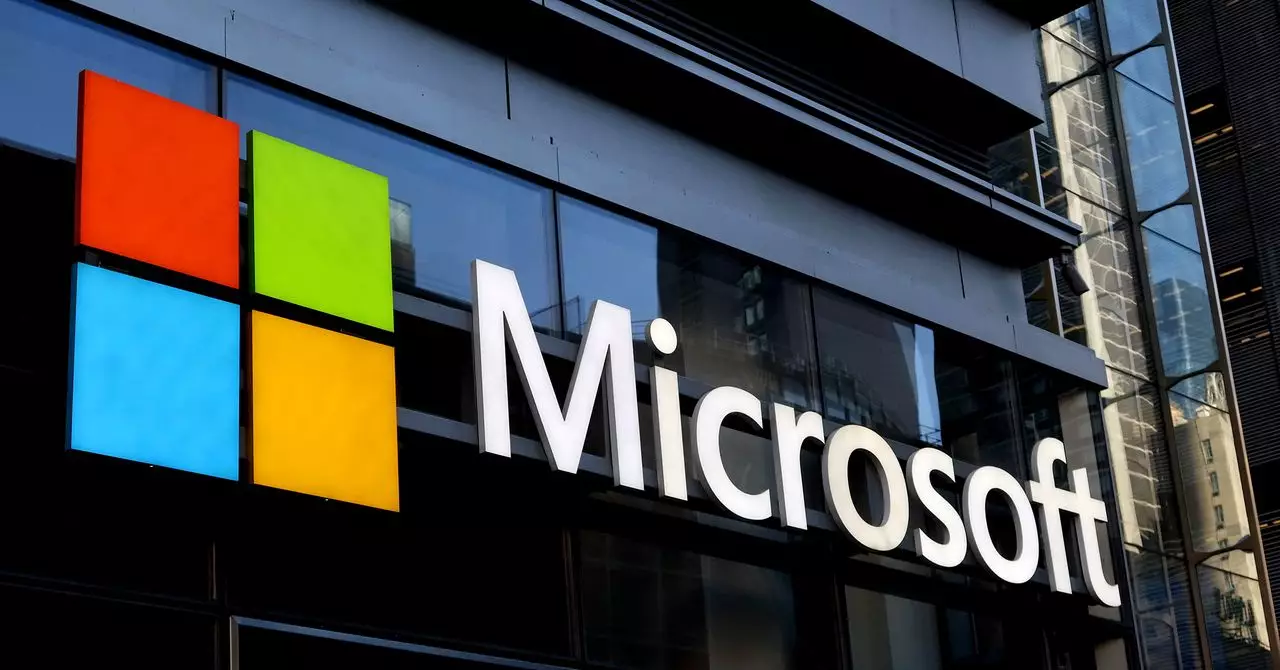Microsoft’s latest advancement in artificial intelligence could mark a paradigm shift in medical diagnostics, demonstrating how AI systems may soon outperform even seasoned human physicians. The company’s new AI-powered diagnostic tool, ingeniously named the MAI Diagnostic Orchestrator (MAI-DxO), reportedly achieved a staggering 80% accuracy rate in diagnosing diseases, significantly surpassing an expert human panel benchmarked at just 20%. Coupled with a 20% reduction in associated costs, this technology does not merely mirror human decision-making—it amplifies it.
Unlike previous AI endeavors that primarily aimed to replicate diagnostic output, Microsoft has focused on modeling the entire diagnostic reasoning process. Their approach leverages a chain of AI agents that collaborate in a “chain-of-debate” format, reflecting how multiple doctors might discuss and refine a diagnosis. This multi-agent system integrates the strengths of leading AI models such as OpenAI’s GPT, Google’s Gemini, and Meta’s Llama, among others, creating a synergy that single models alone cannot achieve. This orchestration mechanism is being hailed internally as a foundational step toward genuine medical superintelligence—a system intelligent not just because it crunches data quickly, but because it genuinely understands and refines diagnostic reasoning over multiple iterative steps.
Why Microsoft’s Methodology Matters in the AI Health Tech Revolution
The significance of Microsoft’s breakthrough lies not just in its diagnostic acumen but in its methodology. The system was rigorously tested using 304 detailed medical case studies from the New England Journal of Medicine, employing a benchmark known as the Sequential Diagnosis Benchmark (SDBench). This testing paradigm mimics the real-world stepwise method doctors use: examine symptoms, order tests, interpret results, and update diagnoses accordingly. This adds a level of transparency, logic, and robustness to the AI’s decisions that previous binary or purely statistical models lacked.
Moreover, this approach tackles a crucial challenge in AI medical models—bias and generalizability. By modeling multi-agent collaborative reasoning, Microsoft’s platform can potentially detect and correct biases that stem from skewed training datasets, particularly demographic imbalances in health data. While concerns remain about inherent AI biases, the multi-agent system might provide a built-in checks-and-balances framework, limiting misdiagnoses rooted in faulty assumptions.
The Industry Impact and Ethical Imperatives
Microsoft’s pivot to a multilateral AI diagnostic system underscores the growing competition in the AI healthcare domain. The company has strategically recruited top talent from Google’s AI division, reinforcing the escalating “war for AI talent” that is reshaping tech giants’ R&D landscapes. This intense competition also accelerates innovation but raises harder questions: How do we ensure responsible deployment of these powerful tools? Can AI-based diagnostics adhere to ethical standards, patient privacy, and equity?
The potential integration of this technology into consumer-facing platforms like Bing signals Microsoft’s ambition to democratize healthcare diagnostics. On the surface, empowering users to self-assess symptoms could increase healthcare accessibility and reduce preliminary consultation burdens. However, caution is imperative. Layperson self-diagnosis via AI systems without professional mediation may lead to misinterpretation, unnecessary panic, or worse, delayed critical care. Therefore, Microsoft and the broader industry must tread carefully, balancing accessibility with medical oversight.
From Promise to Practice: The Road Ahead
While Microsoft’s achievement signals undeniable progress, the journey from laboratory success to everyday clinical tool is fraught with complexity. Real-world validation trials are essential to evaluate how the MAI-DxO system performs amid the chaos of diverse patient populations, incomplete medical histories, and varying healthcare infrastructures. Mustafa Suleyman, CEO of Microsoft’s AI team, emphasizes that the coming years will focus heavily on rigorous testing in practical healthcare settings.
Significantly, Microsoft’s work differs from prior research partly because it simulates the real cognitive workflow of medical diagnosis rather than just matching symptoms with diseases. This imitates expert-level clinical reasoning and opens the door to AI systems that could assist doctors in refining decisions or automating routine cases—freeing human practitioners to focus on the most complex and nuanced aspects of care.
Why Medical Superintelligence is More Than a Buzzword
Superintelligence is often discussed in theoretical AI circles as an abstract or distant possibility, but Microsoft’s diagnostic model demonstrates a tangible early application of this concept in healthcare. By orchestrating multiple intelligent systems to interact, debate, and refine conclusions, the company is cultivating an AI ecosystem capable of nuanced reasoning beyond raw data correlation. This is a subtle but profound shift that moves AI from a passive tool to an active collaborator.
However, with great power comes great responsibility. The pursuit of medical superintelligence must be matched with transparency, rigorous validation, and a clear understanding of AI’s current limitations. AI is not infallible—and overreliance without human safeguards could lead to ethical and clinical pitfalls.
Microsoft’s move is an inspiring glimpse into the future of AI-enabled medicine: smarter, faster, and potentially more equitable. Yet, it also challenges the entire ecosystem—researchers, regulators, healthcare providers, and patients—to rethink what roles humans and machines should play in the healing process.

